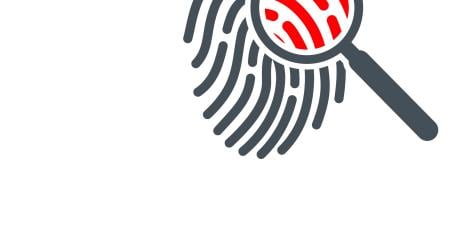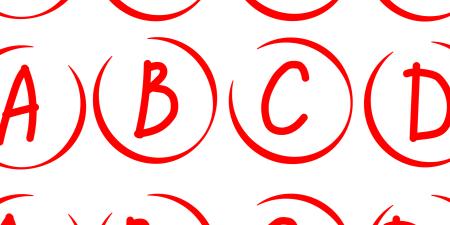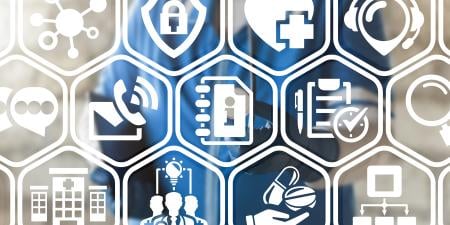As members of the Departments of Pediatrics and Medical Education at the University of Illinois at Chicago, we have taught evidence-based medicine to medical students and pediatrics residents together for over a dozen years. In that time, we have experimented with many models of teaching and learning, conducted research into the impact of EBM education on physicians’ use of evidence [1, 2], and developed online tools and systems to support both students and practicing clinicians [3, 4].
Our earliest curricula focused on introducing concepts and skills of EBM into inpatient pediatrics morning reports through a set of weekly sessions repeated in each 4-week rotation [5]. These later evolved into a cumulative curriculum for ambulatory pediatrics and national workshops for faculty teaching EBM held at UIC, other sites in the U.S., and at the Pediatrics Academic Society meetings. In recent years, we have taught EBM in the context of a mandatory, semiweekly morning conference for residents and clerks on pediatric rotations.
In this commentary, we outline what we consider to be key insights in the teaching and practice of evidence-based medicine.
Emphasis on Medicine
Evidence-based medicine is, first and foremost, medicine. As a facet of medical practice, EBM should be consistent with the professional ethics and responsibilities of the physician, including the primacy of the patient [6]. Early in our development of EBM activities, we discarded the traditional “journal club” format, in which articles are reviewed on the basis of their recent publication, in favor of asking students to identify patients in their care about whom they had unresolved questions. The patient’s care and context drives the development of a question, and the skills of evidence-based medicine—literature search, critical appraisal of methods, and interpretation of results—are all employed to benefit the current patient or similar future patients.
Not All Evidence is Created Equal
Early opponents of evidence-based medicine as an organizing principle in medical education often criticized a straw man position in which only randomized controlled trials (RCT) were accorded the status of valid evidence (and some early and zealous proponents of EBM took positions that made this criticism seem apposite). Of course, RCTs are neither the sole source of evidence nor even always an appropriate source of evidence, given the question to be answered [7]. EBM is about using the best available evidence [8].
It is important, however, for students to know that sources of evidence differ in the strength of the conclusions that can be drawn from them, and to understand why. Critical appraisal checklists provide rough rubrics for this assessment, but cannot substitute for teaching students the ways in which choices made in study design entail trade-offs.
Evidence is not limited to the clinical research literature. Critiques of EBM have rightly noted the essential role of experienced clinical judgment, preferences of patients, and knowledge of physiological processes. Teaching EBM is not the same as teaching medicine. Nevertheless, an understanding of clinical research and the ability to reason statistically are requisites for the practice of medicine.
Needs of Learners and Practitioners Differ
In some ways, teaching EBM is like teaching microscopy. We teach microscopy to medical students because we expect physicians to be able to understand reports of lab findings, knowing that, in practice, time is limited and a physician’s attention is better directed to the patient than to statistical calculations. Similarly, we believe that medical students and residents should master the fundamentals of searching the primary literature and become acquainted with secondary sources, even though we expect physicians in practice to use guidelines, systematic reviews, expert synopses, and decision support tools far more often than they conduct critical appraisals of the primary research literature. Mastery of EBM fundamentals facilitates effective use of the secondary literature, critical appraisal of the primary literature when new studies have emerged that have not yet been synthesized, and thoughtful guidance when a patient presents with an article in hand.
The development of online tools to enhance EBM practice and learning has also been a focus of our efforts. Computing risk reductions and likelihood ratios is not the most salient aspect of interpreting medical statistics. Rather, it is the ability to understand the relationships between interventions and outcomes, or test results and disease probabilities. Online calculators allow students and residents to manipulate the features of statistical scenarios to achieve this deeper understanding.
Learners also have opportunities that are not always afforded to physicians in practice. Our trainees are assigned to identify patients, formulate questions, and review evidence individually throughout the year, but they also present their cases and conclusions to small groups consisting of other trainees and faculty. These group discussions encourage deeper consideration of the evidence and reflection on its implications for patient care, and more than once have resulted in faculty and trainees publishing research letters in response to articles discussed.
Nonphysicians May Be Evidence Experts
One of us is a physician; the other, a social scientist. That we are both capable of effectively understanding the design and results of clinical studies reminds us that expertise with evidence is not equivalent to expertise as a physician. Indeed, our research has demonstrated that medical librarians can be trained to outperform physicians in evidence appraisal and interpretation. Physicians can rely on these “clinical informationists” [9] to serve as consultants much as they rely on experts in laboratory medicine to perform and report diagnostic tests. In the time-sensitive milieu of medical practice, we and others have found that physician-librarian teams can be efficient and effective by allowing librarians to engage their deep knowledge and skills in accessing clinical literature (together with their training in statistical analysis and interpretation) and freeing physicians to formulate questions about their patients and bring the results back to the bedside to enhance clinical care.
EBM Is Necessary, but not Sufficient, for Medical Decision Making
We frame EBM as a step in the process of making good medical decisions, rather than as an academic exercise to satisfy the physician’s curiosity. Decision making is a much broader activity and requires inputs that are not usually the focus of EBM teaching: patient preferences, costs, ethical considerations, and other features of the health care delivery system [10]. Because it provides a framework for understanding the essentially uncertain nature of medical diagnosis and treatment, EBM is an early and essential step in the development of a medical decision maker. In our recent year-long EBM curricula, we have often introduced more advanced decision-making concepts, including decision thresholds and cost-effectiveness analysis.
Conclusion
Critics characterize evidence-based medicine as a constraining influence, directing students and practitioners to subjugate their clinical judgments to guidelines that address average patients rather than specific patients. But proponents of including EBM in medical education believe that uncritical and habitual clinical decision making can lead to substantial and unwarranted variation in care. We at UIC, like educators at many medical schools, think it is ethically imperative that our graduates consistently challenge their understanding and practice medicine in accord with the field’s best knowledge of effective care. Patient-focused EBM education is a critical step in this process.
References
- Schwartz A, Hupert J. A decision making approach to assessing critical appraisal skills. Med Teach. 2005;27(1):76-80.
- Schwartz A, Hupert J. Medical students’ application of published evidence: randomised trial. BMJ. 2003;326(7388):536-538.
-
Schwartz A. Evidence Based Medicine (EBM) and Decision Tools. MedEdPORTAL. http://services.aamc.org/jsp/mededportal/retrieveSubmissionDetailById.do?subId=209. Accessed December 15, 2010.
-
Schwartz A, Millam G. A web-based library consult service for evidence-based medicine: technical development. BMC Med Inform Decis Mak. 2006;6:16.
-
Schwartz A, Hupert J, Elstein AS, Noronha P. Evidence-based morning report for inpatient pediatric rotations. Acad Med. 2000;75(12):1229.
-
Straus SE, Richardson SR, Glasziou P, Haynes RB. Evidence-Based Medicine: How to Practice and Teach EBM. 3rd ed. Edinburgh: Churchill Livingstone; 2005.
- Norman GR. Examining the assumptions of evidence-based medicine. J Eval Clin Pract. 1999;5(2):139-147.
- Straus S, Haynes B, Glasziou P, Dickersin K, Guyatt G. Misunderstandings, misperceptions, and mistakes. Evid Based Med. 2007;12(1):2-3.
-
Davidoff F, Florance V. The informationist: a new health profession? Ann Intern Med. Jun 20 2000;132(12):996-998.
-
Schwartz A, Bergus GR. Medical Decision Making: A Physician’s Guide. Cambridge, UK: Cambridge University Press; 2008.



